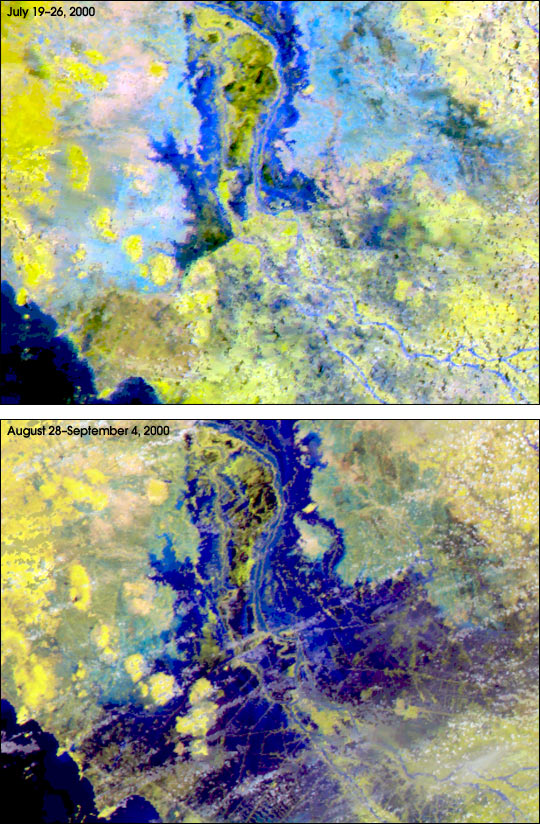


New Space Views of Southeast Asian Floods Aid United Nations Disaster Relief Effort
Emergency food supplies being rushed to victims of the current flooding in Southeast Asia are being planned with the help of a new type of image from NASA's Terra spacecraft and a unique global flood monitoring system funded by NASA.
With new composite surface images from Terra released last month, Robert Brakenridge of Dartmouth College (Hanover, N.H.) produced maps showing the precise locations of flooded areas along the Mekong River. Hundreds of thousands of people have been displaced in the region by the worst flooding since 1961. These maps are being used by United Nations World Food Program staff to pinpoint the worst-hit areas.
"We get a dramatic increase in our mapping accuracy with the new 8-day composite images from the Moderate Resolution Imaging Spectroradiometer (MODIS) instrument onboard Terra," says Brakenridge. This new data product was released to the scientific community in August by the EROS Data Center in Sioux Falls, South Dakota, which is part of NASA's Earth Observing System Data and Information System. Images were available from early June at the onset of the Southeast Asia floods.
The frequent heavy cloud cover over Southeast Asia makes it difficult to regularly see the surface and flooded areas, says Brakenridge. To overcome this problem, eight MODIS images from consecutive days are blended together to produce one image that combines all the cloud-free views of the surface. This new image product provides a look at how much floods rise or fall nearly every week.
Observations of floods in a region over successive years help disaster relief agencies like the United Nations unequivocally identify the largest flood events and allocate limited aid resources accordingly.
"The MODIS maps are proving really useful to us," said Mahadevan Ramachandran, the United Nations World Food Program regional vulnerability analysis and mapping officer in Phnom Penh, Cambodia. "In areas like Cambodia and Laos where there are weak data collection systems on the ground, the MODIS data will be our first-hand information to identify the areas we need to visit and assess for ourselves."
For more information, see the Dartmouth Flood Observatory, and NASA's Earth Observing System program
Images courtesy Robert Brakenridge